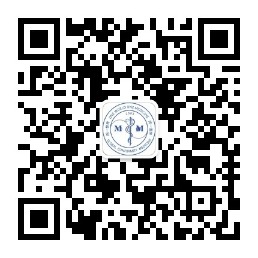目的 基于数据挖掘技术探讨针刺治疗卒中后肩手综合征(SHS)的取穴规律。 方法 搜索中国知网、万方数据知识服务平台和维普数据库,筛选有关针刺治疗SHS的文献,建立处方数据库。用Excel建立矩阵数据进行腧穴规范化处理、频次统计和穴位归经,对特定穴位使用情况进行频次分析,建立矩阵数据库,再将矩阵转化为数据透视表后导入SPSS Modeler 18.0统计学软件进行腧穴复杂网络可视化展示,并运用 Apriori算法进行高频腧穴间的关联规则分析;运用Origin 2021软件中的层次聚类分析方法对高频腧穴进行聚类分析。结果 纳入101篇文献,共提取出处方101条,涉及腧穴67个,所有腧穴累计出现总频次为815次。应用频次排名前5的腧穴依次为肩髃(86次)、合谷(70次)、 曲池(69次)、 外关(69 次)、 手三里(49次)。关联规则分析结果显示,曲池-合谷、外关-合谷、肩髃-合谷支持度最高;通过聚类分析得到4个有效聚类组,分别为肩髃-肩髎-合谷-外关-曲池-手三里-臂臑、肩贞-八邪-天宗-肩井、后溪-中渚、内关-尺泽-极泉-肩前-阿是穴。 结论 针刺治疗中风后SHS取穴以局部取穴和手三阳经穴为主,这些穴位的使用和组合规律可能是治疗SHS最简便有效的针刺方案。
微创医学 页码:149-154
作者机构:广西中医药大学第一附属医院,广西南宁市 530023
基金信息:国家自然科学基金项目(编号:81760887);广西科技厅重点研发项目(编号:AB18126085);广西壮族自治区中医药管理局自筹经费科研课题(编号:GXZYA20220023、GXZYA20220023);广西中医药大学石墨烯生物医药应用技术研究院项目(编号:H9900201)
- 中文简介
- 英文简介
- 参考文献
Objective To explore the acupoint selection laws for treatment of post-stroke shoulder-hand syndrome (SHS) with acupuncture based on data mining technology. Methods Search and screen literature related to acupuncture treatment of SHS in CNKI, Wanfang Data Knowledge Service Platform, and VIP database to establish a prescription database. Excel was used to establish matrix data for acupoint standardization, frequency statistics and acupoint meridian tropism. The frequency of the use of specific acupoints was analyzed to establish a matrix database, which was then transformed into a pivotable and imported into SPSS Modeler 18.0 statistical software for visualization of the complex network of acupoints. And the Apriori algorithm was used to analyze the association rules between high-frequency acupoints. The hierarchical clustering analysis method of Origin 2021 software was used to cluster analysis the high-frequency acupoints. Results A total of 101 prescriptions were extracted from 101 articles, involving 67 acupoints, and the total frequency of all acupoints was 815 times. The top 5 acupoints ranked by application frequency were Jianyu (86 times), Hegu (70 times), Quchi (69 times), Waiguan (69 times) and Shousanli (49 times). The results of association rule analysis showed that the support of Quchi-Hegu, Waiguan-Hegu, Jianyu-Hegu was the highest. Four effective clustering groups were obtained through cluster analysis, namely, Jianyu-Jianliao-Hegu-Waiguan-Quchi-Shousanli-Binao, Jianxhen-Baxie-Tianzon-Jianjing, Houxi-Zhongzhu, Naiguan-Chize-Jiquan-Jianqian-ashi point. Conclusion Acupuncture treatment for post-stroke SHS mainly focuses on local acupoints and the three yang channels of hand. The use and combination laws of these acupoints may be the most simple and effective acupuncture scheme for SHS treatment.
-
无




 注册
注册 忘记密码
忘记密码 忘记用户名
忘记用户名 专家账号密码找回
专家账号密码找回 下载
下载 收藏
收藏
